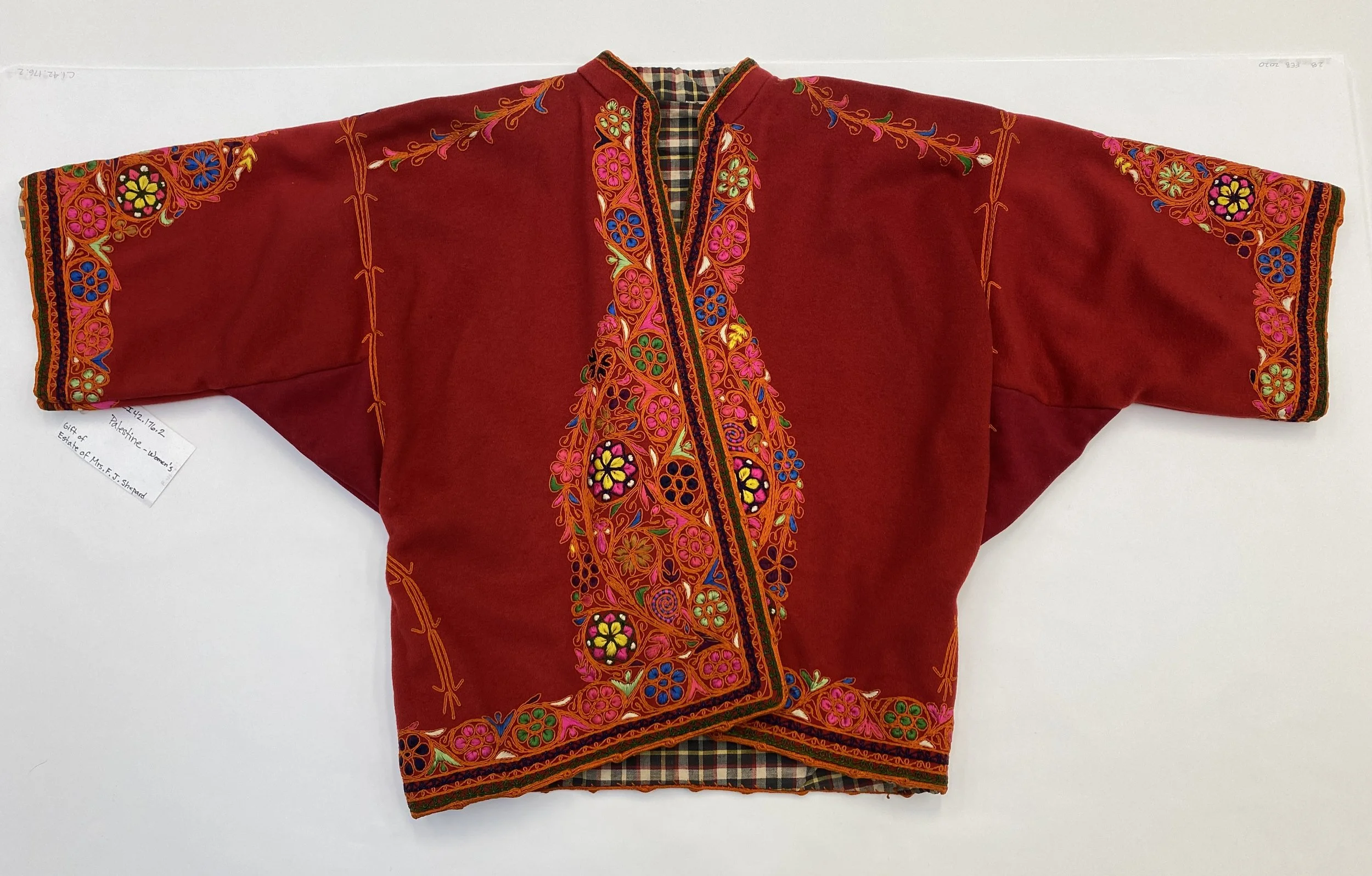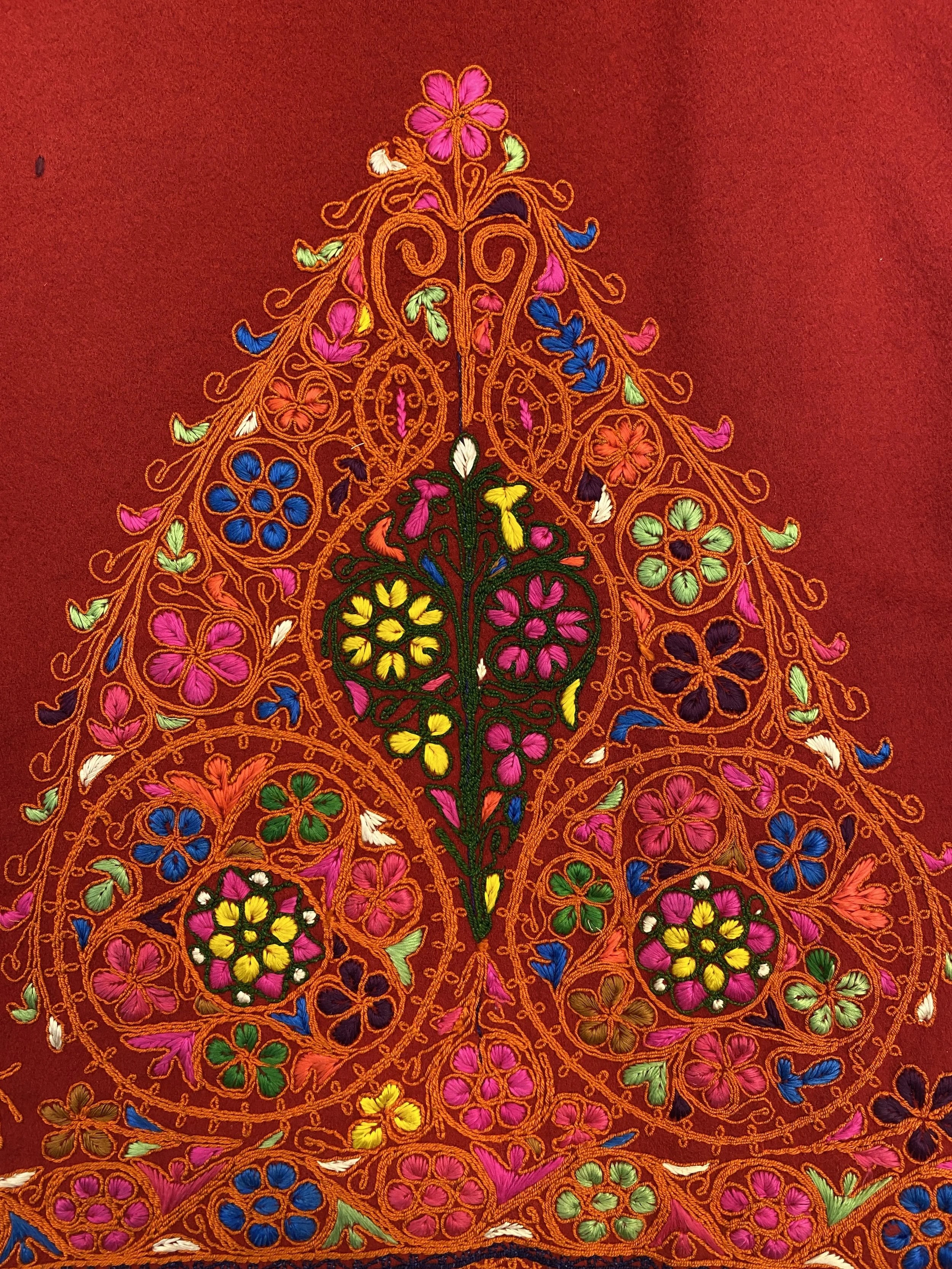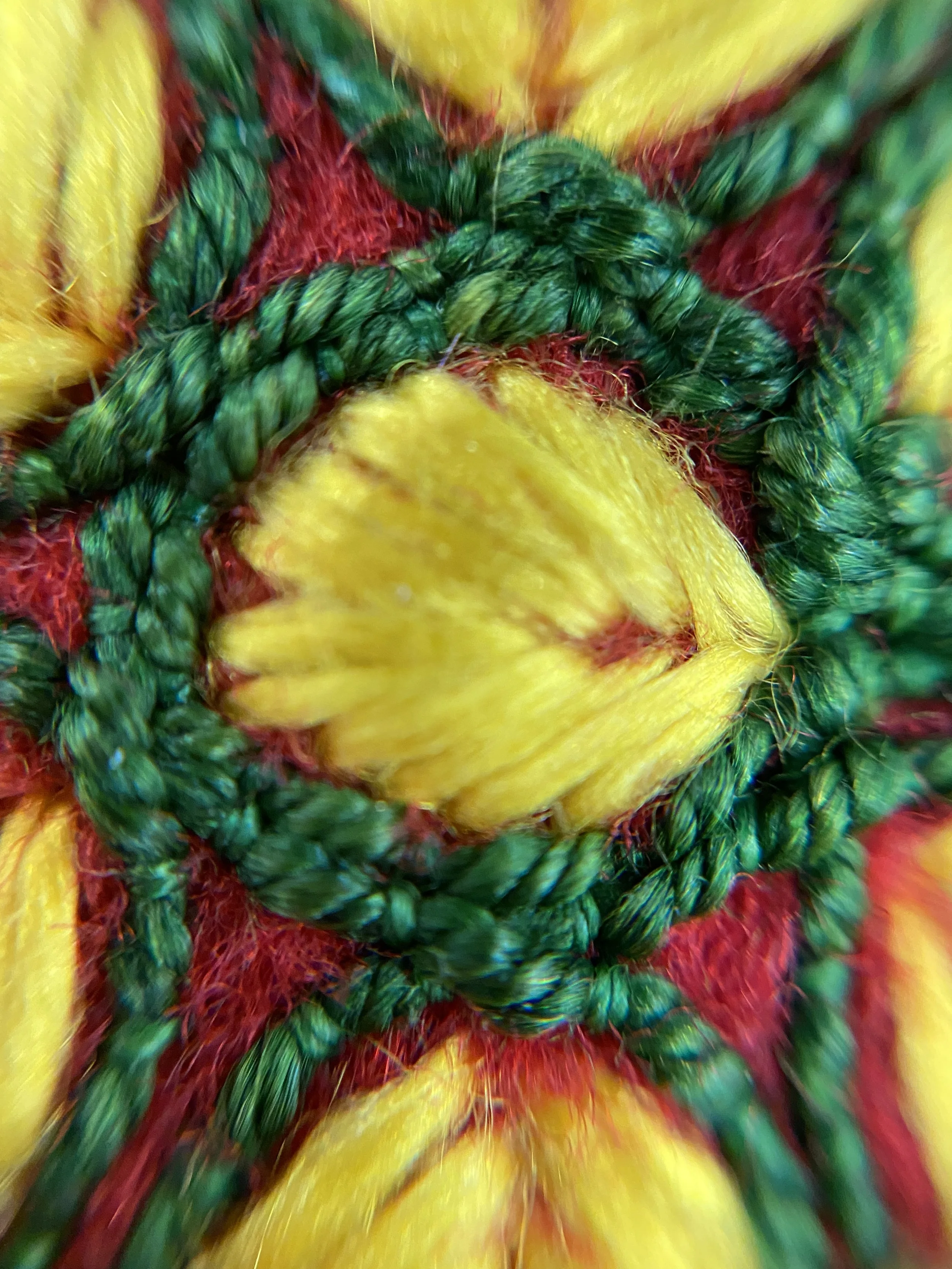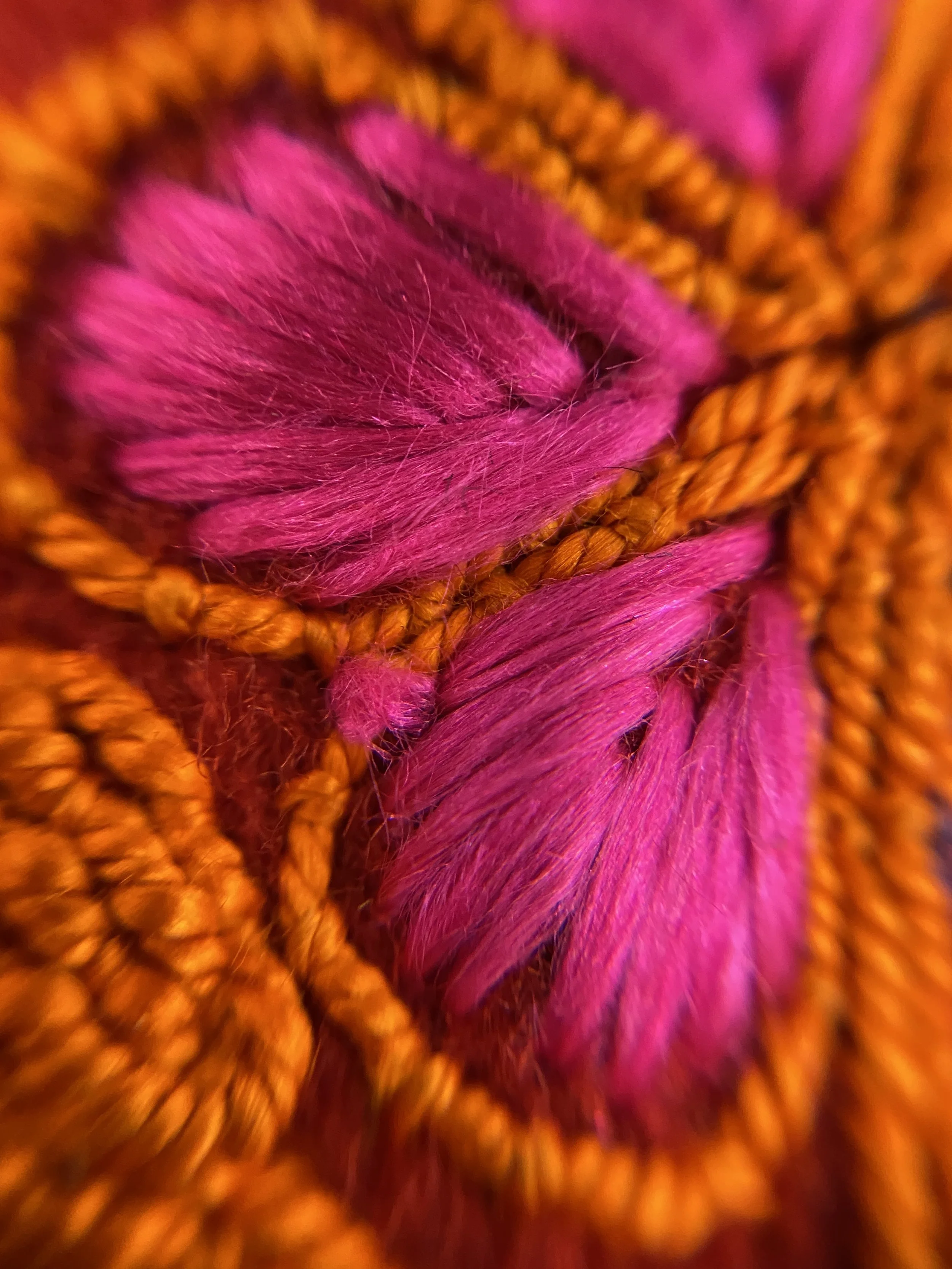Wafa is in the final stage of research for the next book project, requiring a couple more trips to The Metropolitan Museum of Art in New York to complete review and research of the collection, as well as to better compensate other collaborators on the project. Traveling to NYC has often relied on her community for help in overnight stays, and she continues to minimize costs whenever possible — however, your support is needed to make it through to the final phase of research.
Please donate to this independent book project to help in the expenses of self-funded research in Palestinian embroidery. Funding is extremely limited in the arts — most especially in Palestinian identity, culture and art in the United States.
Your donation of $10, $20 or $50 makes a big difference! Every dollar counts, and when you donate at least $50, you will be acknowledged in the credits of the book.
*Last updated: 7/29/2022, 12:13pm EST.
Wafa Ghnaim studying Object C.I.42.176.1, mid-nineteenth century Palestinian dress (thobe) from Ramallah. Photograph by Elena Kanagy-Loux, © The Metropolitan Museum of Art, 2021.
In 2021, I began working on my second book project. It has been a wonderful and fruitful experience as I have grown in this field tremendously, having my own name (not Tatreez & Tea) recognizable to other researchers in the field. Thank you for always supporting my work, and showing your dedication in preserving Palestinian art history through my research goals.
Last year, the fundraising goal was achieved and I was successfully able to begin research with The Metropolitan Museum of Art. The stated goal of my second publication is to identify never-before-seen traditional patterns, as well as surface unique iterations of traditional and diaspora Palestinian patterns. I have successfully received publishing permission from The Metropolitan Museum of Art for my research of their objects, as well as received permission to publish objects from the Textile Research Centre, led by Dr. Gillian Vogelsang-Eastwood, as well as Tiraz Centre, led by Ms. Widad Kawar. The collection I am publishing in the book is a robust collection, presented in my own logical framework, that can be easily accessible to all researchers in the way no other book on Palestinian embroidery has done.
At the time that I was fundraising for this project, Palestinian objects were not identified on The Met’s Heilbrunn Timeline of Art History, referenced by scholars around the world. For over a year, I have been proudly collaborating with Associate Curator Deniz Beyazit at The Metropolitan Museum of Art to research and identify all of the Palestinian textile objects in their collection and update the Heilbrunn Timeline of Art History. Our changes should be published before the end of the year!
In addition, with the help of the spectacularly talented and knowledgeable Collections Specialist Elena Kanagy-Loux, Deniz and I will have managed to view and study the entire Palestinian collection at The Met by this summer. My work with the museum will ensure that these objects are correctly identified for future generations of researchers, as well as be discussed in greater detail in my upcoming book.
The design of the book is underway, as well, and we have designed the overall structure of the book. As research wraps up this summer, it is a matter of dedicating writing time and finalizing photographs (or re-photographing objects) to ensure the book is completed by next summer in 2023.
I have accomplished quite a bit, thanks to your support, and I will continue to work with The Met indefinitely to collaborate with them on the documentation of this collection. In order for me to continue this work, as I secure institutional support for my research to begin in 2023, it is required that I fundraise for an additional $8,000 USD. It may seem that what I fundraised in 2021 was sufficient for this project, however, travel and accommodation to New York City is extremely expensive. Each study day, the museum is able to accommodate 5-8 objects. I can book two study days per trip. I have travelled to New York several times, and have at least two more visits left this summer in order to complete the initial, first-time view and study of the objects. Some objects were difficult to identify and I have had to request to view them again. In my last book, in only a few trips to Oregon and staying with my mother, I was able to photograph and research the entirety of the book. Now, I am working with museums, with protocols and rules in order to access the objects, and it takes significantly more time.




In May, I had the pleasure to continue my research and identification, focusing primarily on the Bethlehem garments in The Met’s collection. On this particular day, we viewed 5 jackets (some were the traditional taqsiri, but the others were from other cultural homes, as they seemed to be misidentified) — seeing them side by side was educationally enriching and having the expertise of Ms. Deniz and Ms. Elena in the room made for a very detailed and fantastic conversation around weave structures, felting processes, and cording techniques of not just Palestine but of the overall region under the Ottoman Empire, as well as into Europe.
I look forward to reaching huge milestone this summer in finishing our initial review of the Palestinian objects in the collection, and moving on next to the expansive Syrian textiles.
Image 1: Aerial view of the front of the Bethlehem taqsiri jacket. On the inner left opening of the jacket, there was a patchwork pocket that was made of the printed cotton fabric liner. The pock was vertically narrow, making it a secure storage for the wearer. The Metropolitan Museum of Art, Object C.I.42.176.2. Photograph by Wafa Ghnaim, 2022.
Image 2: Overall image of the decorative techniques on the back of the same Bethlehem taqsiri jacket. The Metropolitan Museum of Art, Object C.I.42.176.2. Photograph by Wafa Ghnaim, 2022.
Image 3 & 4: Magnification of couched and satin stitches on red wool broadcloth of a traditional Bethlehem taqsiri jacket, circa late 19th or early 20th centuries. The red color of the wool fabric base was magnificent and vibrant -- and the stitches demonstrated great skillfulness of the embroiderer, adding texture to each flower petal in the way the satin stitch was implemented. The Metropolitan Museum of Art, Object C.I.42.176.2. Photograph by Wafa Ghnaim, 2022.


